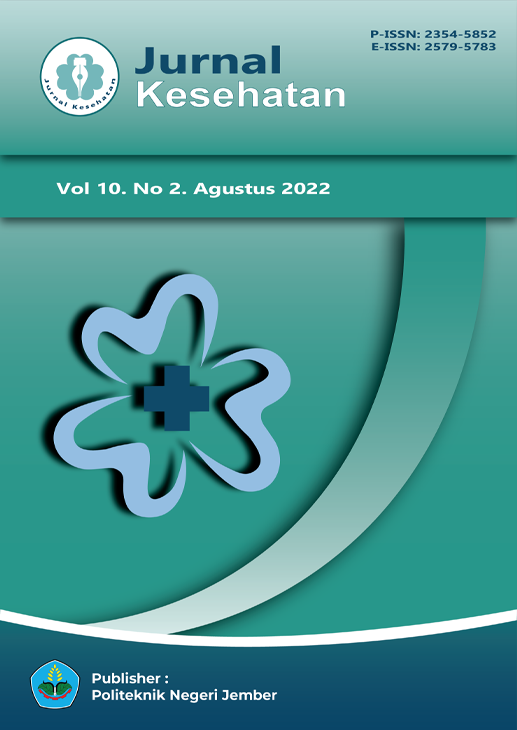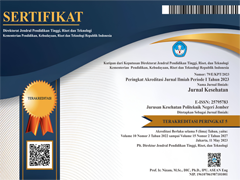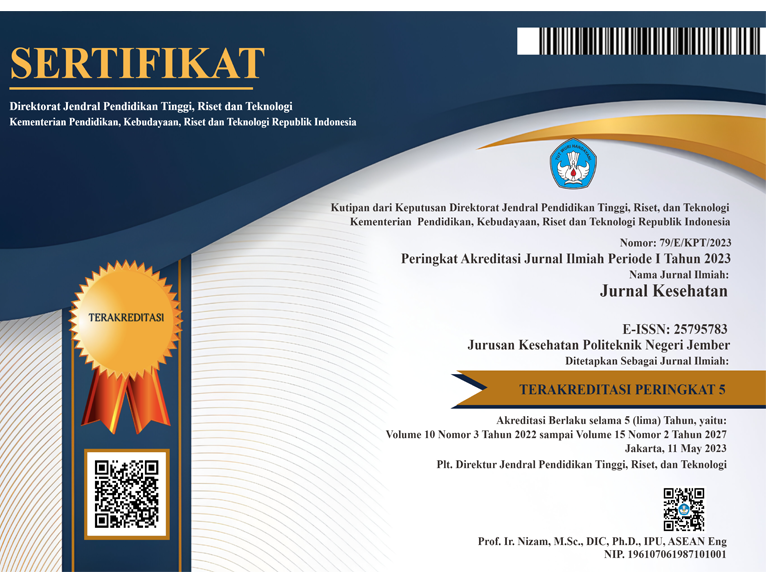Dampak Gangguan Musculoskeletal (MSDs) pada Mahasiswa Pengguna Gadget ketika Sekolah Online
DOI:
10.25047/jkes.v10i2.314Downloads
Abstract
Online schools for students during the COVID-19 pandemic are solutions and challenges. This activity is the main reason to avoid the transmission of COVID-19 and efforts to avoid forming a new cluster in the university environment. Students are at risk of musculoskeletal disorders due to unergonomic posture during online schooling. Analyze musculoskeletal complaints experienced by students during school online. Respoden interpersonal variables with variables related to the duration of musculoskeletal ganges. The research design uses observational descriptive with cross sectional approach to connect between variables. Nordic Body Map (NBM) consists of 28 items of specific questions regarding the location of pain complaints with visual analoge scales (VAS) to determine the level of pain complaints. Respondents are students in Indonesia with a total of 148 respondents. Complaints of musculoskeletal pain right shoulder 17% respondents, left shoulder 16% respondents, waist and buttocks 15% respondents, under the neck 42 (14%) respondents. These results prove that the impact of online schooling on MSDs is true Age (0.02), smoking history (0.05), duration of exercise (0.01) and level of complaints (0.01) related to the length of complaints felt. The study managed to find parts of the body that have musculoskeletal disorders. Routine exercise and design of a comfortable place as long as it needs to be done to lower the risk of musculoskeletal pain
License
Copyright (c) 2022 Bayu Yoni Setyo Nugroho, Evina Widianawati, Widya Ratna Wulan

This work is licensed under a Creative Commons Attribution-ShareAlike 4.0 International License.
Authors who publish in this journal agree to the following terms:
1. Copyright belongs to the medical journal as a publication
2. The author retains copyright and grants the journal rights to the first publication carried out simultaneously under a Creative Commons Attribution License which allows others to share the work with an acknowledgment of the author's work and initial publication in this journal.
3. Authors may enter into separate additional contractual arrangements for the non-exclusive distribution of the work (eg sending it to an institutional repository or publishing it in a book) with acknowledgment of initial publication in this journal.
4. Authors are permitted and encouraged to post work online (eg in institutional repositories or on their websites) before and during the submission process, as before and larger citations of published work (see Effects of Open Access).
Selengkapnya tentang teks sumber ini














